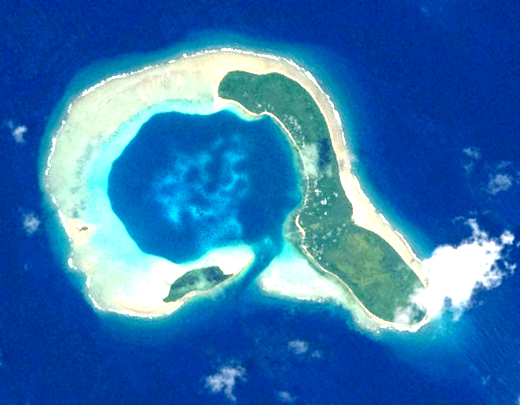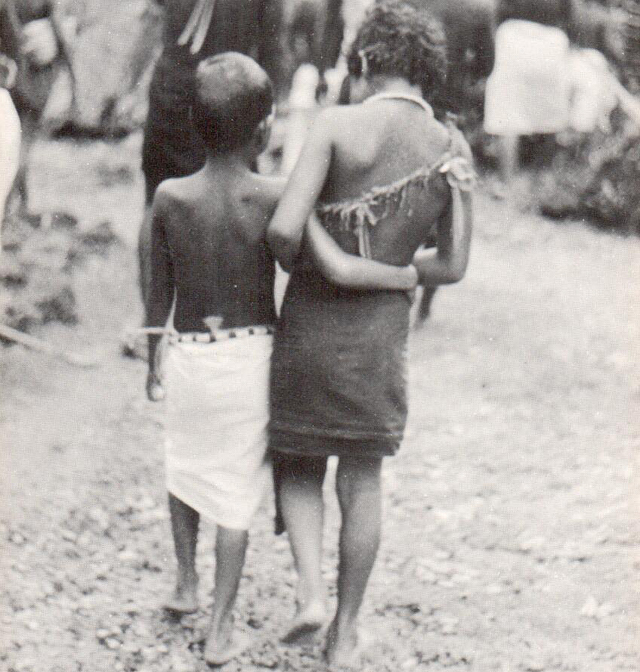A world traveler raved about the wonderful people of Ifaluk Island in a blog entry published last week. Even though Marina, a young woman from St. Petersburg, visited the island in September 2013, her observations are worth studying today since there are so few current reports about this isolated society.

Marina wrote in her blog GipsyTrips.com that her visit to Ifaluk was the highlight of the two-and-one-half month segment of her world travels when she sailed east out of the Philippines through Micronesia. She pointed out that Ifaluk is small—four little islets with a total land area of only 1.5 square km, and it is inhabited by about 750 people. The atoll is quite isolated, with no airplane service, she wrote; the primary visitors are occasional passing sailboats.
The island looked quite clean to her. (Marina used the plural “we” throughout her blog post, so it appears as if she was sailing with one or more companions.) The people and their chief seemed quite happy to have the visitors in their midst for three days. They treated her very well.
Marina noted that life on Ifaluk is quite traditional. Alcohol is still forbidden and the men and women wear their traditional clothing—loin cloths on the men, skirts but no tops for the women. Many of them speak English. The islanders spend their time fishing, making canoes, and fabricating bags from the leaves of palm trees. The visitor wrote that the island has a hospital with one doctor, a Catholic church, and a school. The Ifaluk also have gardens where they raise flowers that are made into crowns for celebratory occasions.

They were constantly trading and giving presents: Marina gave people cigarettes, coffee and food and they gave her coconuts, fish and handmade items such as lava lava skirts in return. The lava lava (also spelled lava-lava or lavalava) is a skirt made out of a single square of cloth, commonly worn on some Pacific islands. The exchange practices also included the children, who gave the visitors sea shells. Without money on the island, the people rely on barter.
The islanders all gathered together in the school to wish their visitors well and to give them flowers when they were ready to leave. All 750 of them shook hands in farewell. The author referred to Ifaluk as a “fairy tale” island—a really special place for her. Marina couldn’t say enough good things about her visit—how hospitable, happy and friendly the Ifaluk were to her. “Locals are very beautiful and open!” she wrote. She included numerous fine photos of the people in her blog post and on her Facebook page.
The statement that alcohol is banned on Ifaluk is one of the more interesting aspects of Marina’s report. The literature shows that decisions by the chiefs on whether alcoholic beverages should be permitted have varied over the past 40 years. Catherine A. Lutz, who did fieldwork on Ifaluk in 1977 and 1978, described several instances of drunken behavior in her 1988 book Unnatural Emotions: Everyday Sentiments on a Micronesian Atoll and Their Challenge to Western Theory. Alcohol was apparently tolerated when she was there. When people misbehaved after drinking, they were said to be “crazy from toddy (p.104).”
However, the Ifaluk at the time did decry the noise that drunk people tended to make, since they ought to be quiet. “Shouting is normally considered a serious disturbance of this otherwise peaceable style but is also seen as intensely frightening,” she wrote (p.158). Alcohol was a potential threat to the peace.
Betzig and Wichimai (1991) presented a different perspective on alcohol on the island not too many years after Lutz did her fieldwork. They told a story about an Ifaluk politician elected as a senator in the Yap State senate who was found to have two bottles of whiskey on the island in his possession. His action contradicted a ban that the chiefs had recently imposed on the consumption of alcohol. The senator received a stiff fine.
However, Richard Sosis, who did field work on Ifaluk in 1997, presented a still different perspective. Sosis and his colleagues (1998) noted that the chiefs controlled whether alcohol could be used in each community on Ifaluk. In a slightly later work, Sosis (2000) briefly described how Ifaluk men gathered the sap from palm trees to ferment into an alcoholic beverage—if the chiefs would permit it.
Marina’s report that alcohol is now completely banned suggests that the Ifaluk chiefs, as part of their commitment to retaining their peaceful traditions, have rolled back the potentially disruptive influences of alcohol consumption.